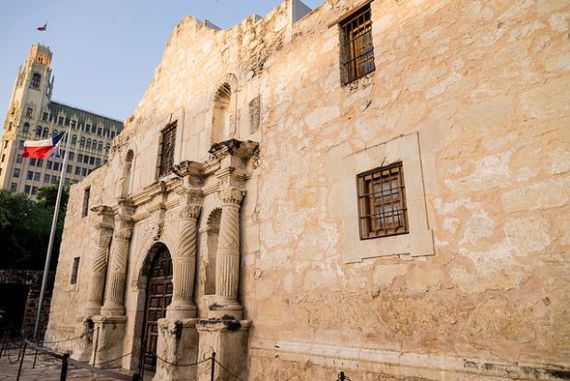So you love travel that combines diverse cultures, history, anthropology and archaeology, but wonder how in the world to find a destination that encompasses all of those elements? Well, here's some guidance from one of the world's most reliable sources, UNESCO. Every year, after extensive study, UNESCO adds a selection of World Heritage sites to its list of some 1,000 places that are of "outstanding universal value to humanity." They range from the Grand Canyon to the Great Wall of China. In July, UNESCO's World Heritage Committee added 27 sites, including San Antonio's the Alamo, the 23rd World Heritage site in the U.S. and the first in Texas. Though all 27 additions are well worth visiting, here are five standout spots at the top of our list.
U.S.
The Alamo, dubbed the "Shrine of Texas Liberty" for its role in Texas independence, is now a shrine of world heritage. The Alamo, whose full name is Mission San Antonio de Valero, is one of five San Antonio missions to attain the coveted UNESCO World Heritage status. The missions, which were built by Spanish Franciscan missionaries in the early 1700s to convert Native Americans to Christianity and help settle the region for Spain, now stand as the largest collection of Spanish colonial architecture in North America. As you'll remember from your history books, the Alamo was the setting for a heroic but disastrous battle in 1836 for Texas independence. With the rallying cry "Remember the Alamo!" the war was won about a month later near what is now Houston. Hike, bike or even kayak between the Alamo in downtown San Antonio and Mission Concepción, Mission San José, Mission San Juan and Mission Espada; they're all within about 3 miles of one another along the San Antonio River.
Israel
The Necropolis of Beth She'arim ("House of Gates"), a more than 2,200-year-old series of catacombs southeast of Haifa, became Israel's ninth World Heritage site. The burial ground features a bevy of artworks and inscriptions in Greek, Aramaic and Hebrew and is also regarded as a landmark of Jewish renewal. These grand Roman-era tombs, carved deep within a hill in the lower Galilee, contain hundreds of stone coffins, elaborately and intricately carved reliefs, and wall paintings. According to Israel's Ministry of Foreign Affairs, Beth She'arim is the oldest and most important ancient Jewish cemetery.
Scotland
The "Sixth Wonder of Scotland," the Forth Bridge, is now Scotland's sixth World Heritage site. The 37-mile-long railway bridge spans the Firth (estuary) of Forth and connects Edinburgh with Fife. Aside from being the world's longest multi-span bridge, the Forth Bridge is also recognized for its innovative design and construction (it was built in 1890 and is still in use today). In addition to the Forth, the Firth and Fife, here's another reason to visit Scotland this year -- 2015 is the country's "Year of Food and Drink." And as ye know, Scotland is also the birthplace of haggis and Scotch whiskey.
Germany
Another new World Heritage designee that's a bit of tongue twister, Hamburg's Speicherstadt and Kontorhaus District with Chilehaus. Here's a translation of the popular Hamburg tourist spot, one of the world's largest historic warehouse complex and office districts. Speicherstadt ("warehouse city") is a network of roads, canals and bridges built between 1885 and 1927. The Gothic red brick-style area, with gables and turrets, even has a dungeon and miniature railroad. The adjacent Kontorhaus District, also built of red brick, is considered one of Europe's first business districts, dating back to the 1920s and 1930s. Chilehaus, also built during that time, is one of the country's first high-rise buildings.
Norway
Also from the early 20th century, Norway's Rjukan-Notodden Industrial Heritage site in Telemark is a complex of giant hydroelectric power plants, factories and towns set among a vivid landscape of mountains, waterfalls and river valleys. The Norsk-Hydro Company built it to manufacture fertilizer from nitrogen in the air, thereby producing boom towns and a huge boost to Norway's economy. In addition to its financial impact, one of the two hydroelectric plants, Vemork at Rjukan, was the scene of renowned sabotage during World War II in Nazi-occupied Norway. A small Norwegian resistance team destroyed the plant's supply of heavy water that the Germans planned to use to build an atomic bomb. The Rjukan-Notodden industrial cities became Norway's eighth World Heritage site, including a few fjords like the Rock Art of Alta Fjord near the Arctic Circle.
Marsha Dubrow writes about travel and the arts for examiner.com. You can follow her on Twitter @MarshaDubrow, connect with her on Facebook and LinkedIn. She earned an M.F.A. in Writing and Literature at Bennington College, which published her book "Single Blessedness."
